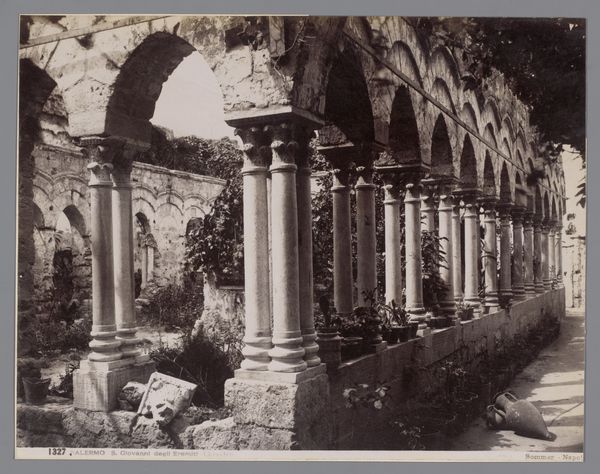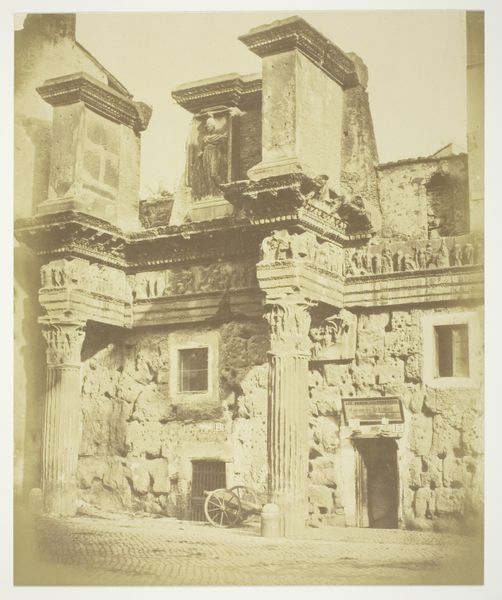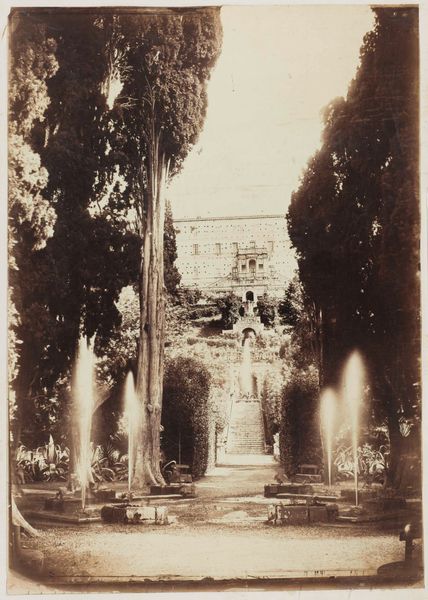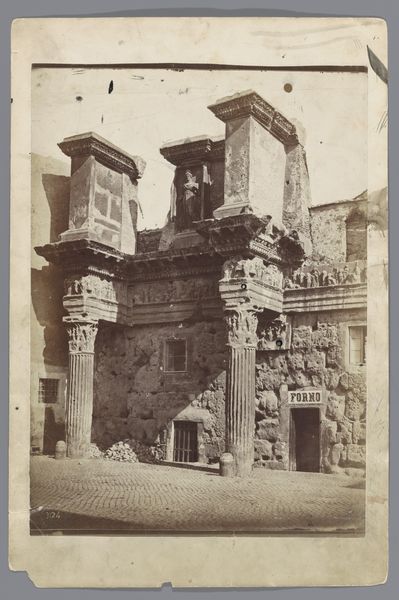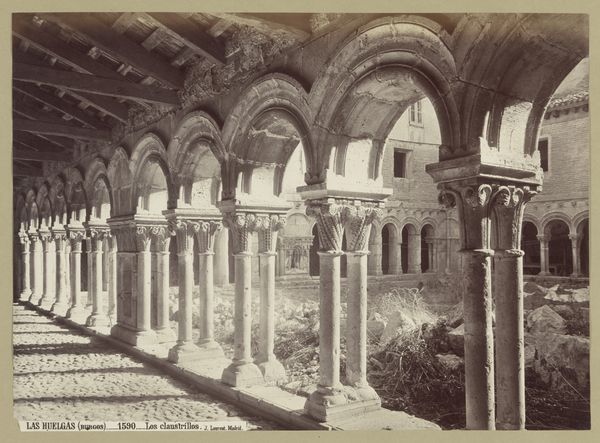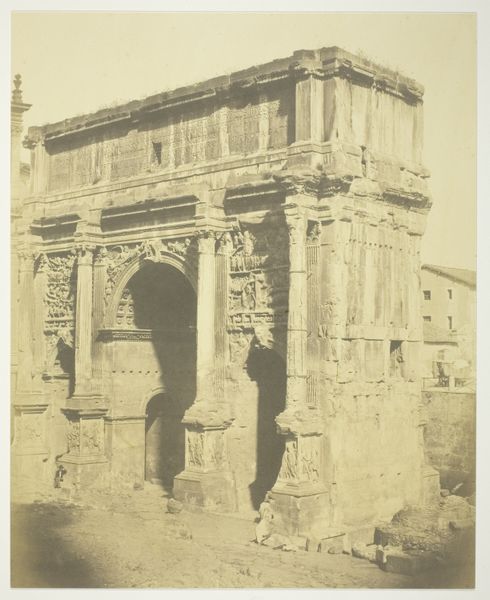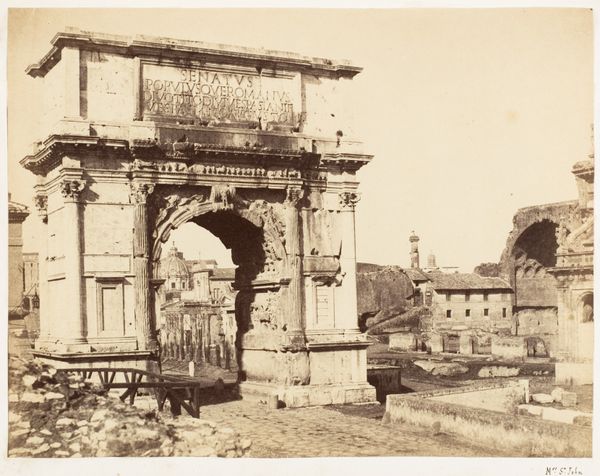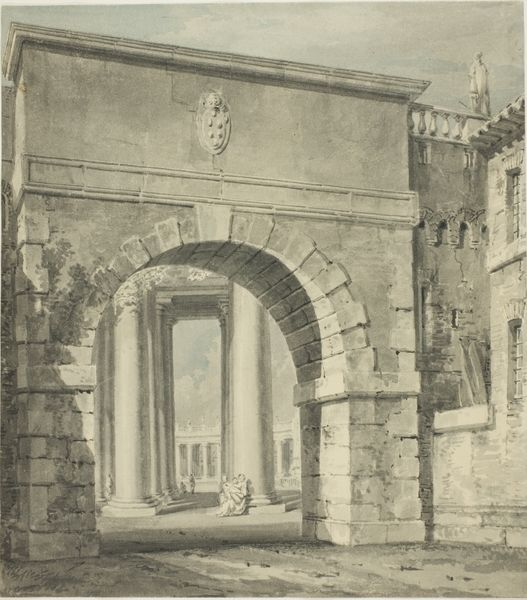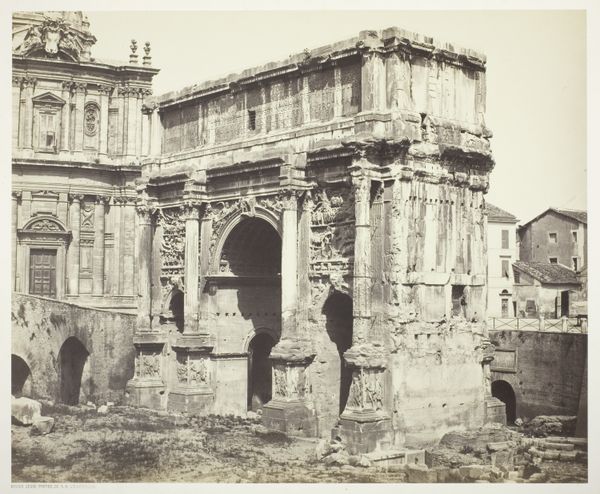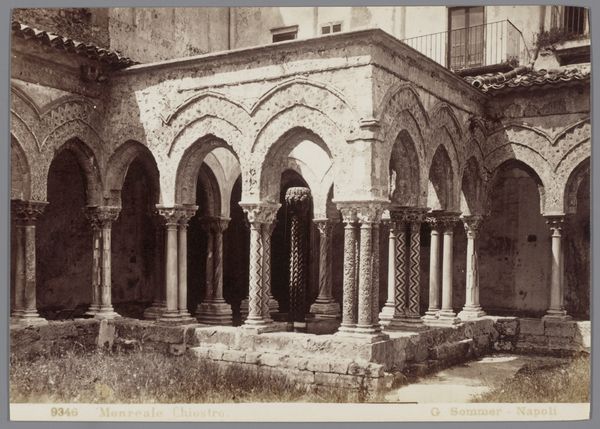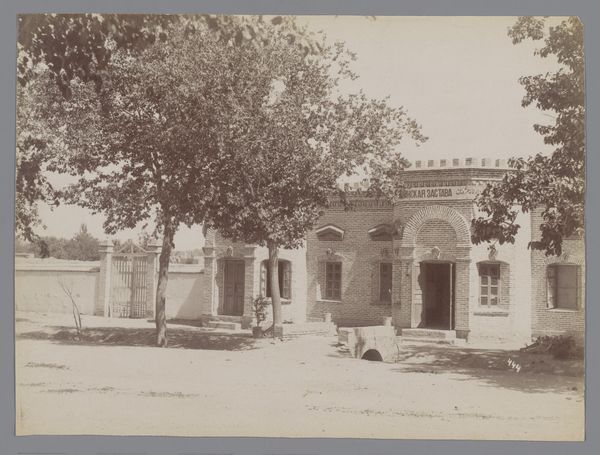
print, daguerreotype, photography, gelatin-silver-print
# print
#
landscape
#
daguerreotype
#
photography
#
egypt
#
ancient-mediterranean
#
orientalism
#
gelatin-silver-print
Dimensions: 15.5 × 22.7 cm (image/paper); 29.6 × 42.7 cm (album paper)
Copyright: Public Domain
Editor: So, this is Francis Frith's "The Circular Temple, Baalbec," taken in 1857, a gelatin-silver print. I'm immediately struck by the almost romantic decay of the architecture – this once grand temple, now softened by time and nature. What does this image communicate to you? Curator: It’s a fascinating image, especially when we consider its historical context. Frith was part of a wave of photographers who documented the Middle East for a European audience, reflecting the era's fascination with the "Orient". How do you think images like this played a role in shaping European perceptions of these regions? Editor: That’s a great question. I guess these photographs, while attempting to be documentary, inevitably brought in a Western perspective and contributed to a specific narrative? Curator: Exactly. Consider the power dynamics at play. The West had the technological capacity to capture and disseminate these images. Who had the power to tell the story of Baalbek? What choices did Frith make in composing this photograph – the angle, the light – that may contribute to a specific reading? Was he documenting or was he performing for a Western audience's established expectation of what "ancient ruins" are? Editor: I hadn't thought about it that way, but the composition *does* seem carefully crafted. Almost as if he’s staged it to evoke a sense of romantic ruin for viewers back in Europe. Curator: Precisely. And thinking about where this print resides now, at the Art Institute of Chicago, do you think its meaning changes again for a contemporary American audience? Editor: Absolutely, I see how viewing it now prompts me to be much more aware of those original biases and assumptions and even Western imperial ambitions. Thanks, this gives me so much to consider! Curator: It's important to question the public role of such imagery and continue the dialogue. We're really unpacking how history shapes not just art, but our very interpretation of it.
Comments
No comments
Be the first to comment and join the conversation on the ultimate creative platform.
